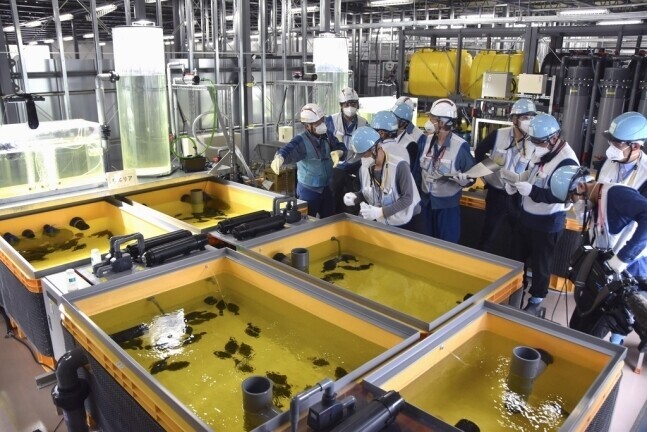South Korea’s main opposition Democratic Party members on Friday took to streets to protest Japans plan to release treated water from the Fukushima Nuclear plant into a nearby ocean.
It would take upto 10 years for the treated water released from Fukushima into the Pacific Ocean to circulate back into the seas around the Korean peninsula, said Bang Moon-kyu the Policy and coordination Minister.
However, Seoul, said Friday that it respected the International Atomic Energy Agency’s conclusion that releasing treated water from the Fukushima No. 1 plant met international safety standards, despite the opposition of many South Koreans.
“Based on a review of the treatment plan of contaminated water presented by Japan, we have confirmed the concentration of radioactive material meets standards for ocean discharge,” Bang Moon-kyu, minister for government policy coordination, told a news briefing in Seoul.
“Therefore the plan meets international standards, including those of the IAEA.”
He added that the release of the water is not expected to have any meaningful impact on the waters surrounding South Korea.
The moves came as IAEA Director General Rafael Mariano Grossi wrapped up his Japan trip and headed to Seoul on Friday for a three-day visit, saying the real work at the Fukushima plant was just beginning.
“This is going to be a long-term effort, a long-term commitment,” Grossi said in Tokyo on Friday, adding the entire process would take decades, possibly 30 or 40 years.
“It requires a number of preparatory measures, which we are taking now so that our successors can have a solid basis to do their job correctly,” he said.
Grossi said that while the International Atomic Energy Agency (IAEA) does not have the authority to shut down the water release operations, it will have a permanent presence at the Fukushima site.
“What we are going to be looking at is that whatever is being discharged is within certain parameters, and that there is no harm to the environment. If we see a problem or deviation, we will immediately raise the alarm,” he said.

On Tuesday, the IAEA endorsed Japan’s plan to discharge radioactive water currently being stored on the Fukushima site that has been treated through a filtration system known as the Advanced Liquid Processing System. ALPS is able to remove most radionuclides except tritium, one of the reasons for the concerns.
The IAEA report concluded that the total amount of tritium to be released each year would be well below the amount of these radionuclides produced by natural processes.
About 1.3 million cubic meters of treated water is currently being stored at the Fukushima site.
The controversial plan, however, faces opposition from the local fishing industry.
The government has said it will start releasing the water sometime this summer, but it is yet to announce a specific date.
“I’ve heard voices of concern from local fishermen regarding harmful rumors causing reputational damage (to their marine products) and whether they can continue on with their livelihoods. We will keep in close communication with them, explain the IAEA’s report and carefully respond to their opinions and requests,” industry minister Yasutoshi Nishimura said Friday.
Nishimura plans to visit the Fukushima plant on Monday.
While South Korea has accepted the plan, China, which strongly opposes the release of the water, said Friday it would strengthen monitoring of radioactive substances to ensure the safety of imported food from Japan. Beijing will continue to maintain its ban on food imports from 10 Japanese prefectures for safety reasons.




















